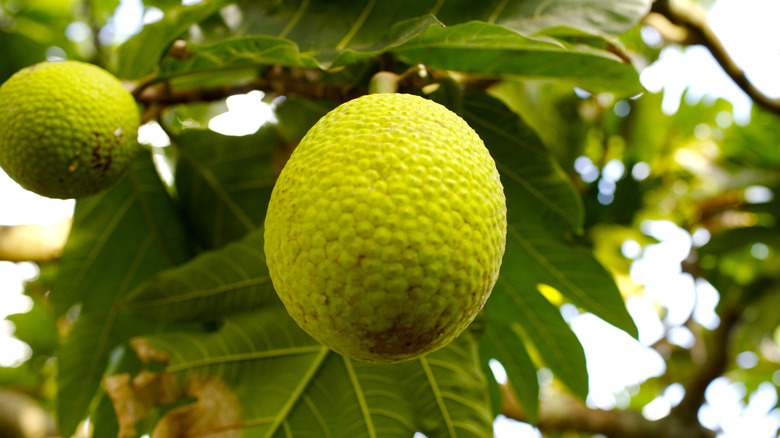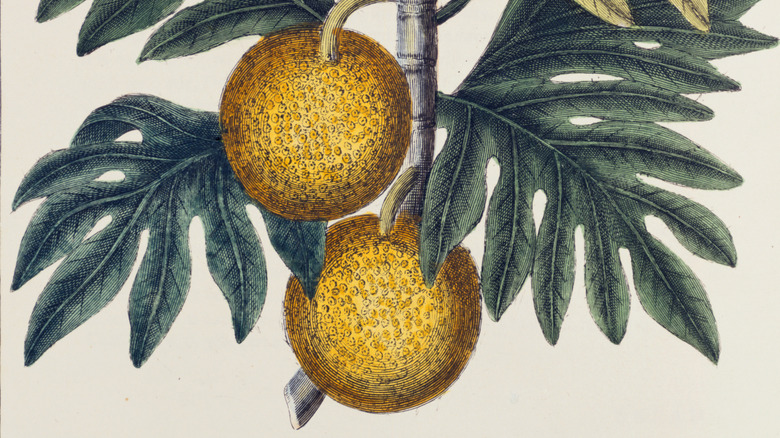The Origins Of Breadfruit Go Way Back
Breadfruit has been a South Pacific staple for over 3,000 years. The starchy fruit can be used in a wide array of savory and sweet dishes, but isn't well-known in the mainland United States. Perhaps it should be. The fruit has a rich history that can be traced to New Guinea and the southern India region. Ancient people traveling in the region then transported the plants to the islands of Polynesia, Melanesia, and Micronesia. During the late 1500s, Europeans happened across the fruit, but it would be another 200 years before breadfruit would be introduced into the New World.
It took until the 18th century for British naturalist and botanist Sir Joseph Banks to see great potential in breadfruit. Banks advised King George III that the plants should be transported from Tahiti to the British territories Caribbean. The less-than-honorable purpose was for the fruit to become cheap food for people enslaved in the West Indies. Notably, the fruit was meant to be transported on the HMS Bounty, including on its disastrous 1791-1793 mission in which crew members revolted against commanding officer Lieutenant William Bligh and tossed hundreds of plants overboard. However, Bligh survived and so did the concept of transplanting breadfruit to the Caribbean.
Breadfruit in the Americas has a complicated history
With a promotion in hand, Captain Bligh led a second ship – the HMS Providence – to continue on with the mission of gathering more breadfruit plants. Two years later, over a thousand breadfruit trees were brought to Jamaica and St. Vincent. The British weren't the only ones to introduce breadfruit to colonies in the tropics. In 1776, the French collected a similar plant, breadnut, in the Philippines for their own Caribbean colonies.
Although breadfruit and its many varieties were originally grown in the Pacific region, most only made it to Hawaii (where it's called 'ulu) and Puerto Rico as far as the future U.S. was concerned. As for cultivating the plants on the mainland, the trees are sensitive to frost and struggle in sub-tropical zones like Florida. Meanwhile, countries like Mexico and Brazil have better luck growing breadfruit in tropical climates (joining other tropical fruits like lychees and rambutans, as well as durian, which you should consider trying).

